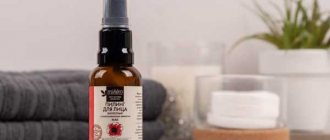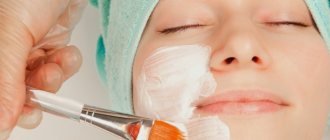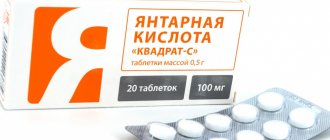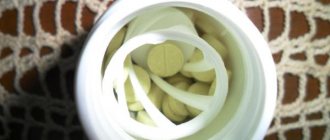What types of acid burns are there?
1st degree burn: moderate redness appears, the affected area burns and hurts.
2nd degree burn: more intense redness, swelling, severe pain, blisters may appear on the skin.
3rd degree burn: skin necrosis, burn areas change color (may become completely white, or vice versa, darken), tissue around the burn turns red, severe pain.
4th degree burn: necrosis of the skin, subcutaneous tissue, muscles, severe pain.
| REFERENCE | |
| Skin necrosis – death of skin cells as a result of injury, the skin swells and breaks down | |
How to provide first aid if acid gets on your skin?
1. First of all, it is recommended to thoroughly rinse the burned area with running water (for 15-20 minutes) to reduce the concentration of the chemical. After this, you should wash the affected area again with soapy water or a solution of baking soda (a teaspoon of baking soda per glass of water).
2. Try not to touch the burned area with your hands, this may cause acid residue to get on you and cause pain to the victim. In general, it is better to carry out all manipulations with thick gloves.
3. Free the burned surface of the skin from clothing; if you cannot remove it, cut it off with scissors. However, do not peel the fabric from the surface of the skin unless it is removable.
4. If a person is in shock (he turns pale, breathing quickens, the pulse is barely palpable), the victim should be given 15-20 drops of valerian tincture.
5. After providing first aid, you must consult a doctor.
Classification by severity
Depending on the severity of the injury, there are three degrees of burns. The first is diagnosed with superficial damage to the skin.
Such burns are formed by short-term or weak contact of the substance with the cover. Accompanied by mild swelling, redness and burning. The wound heals in 3-5 days. There is no scar left.
Blisters filled with clear liquid indicate a second-degree burn.
Pain and redness are more pronounced. It takes about two weeks for tissue recovery after such a lesion. The threat of infection increases.
The third degree is the most severe.
Characterized by damage to the lower layers of the skin. The wound heals after 1-2 months, leaving behind a rough scar.
Burns of mucous membranes are classified in a similar way. In such cases, diagnosing the severity of the lesion becomes more difficult and requires medical assistance.
What burns cannot be washed with water?
Remember that rinsing is contraindicated for burns caused by quicklime or organic aluminum compounds, which become much more active when in contact with water. The area affected by lime should be treated with vegetable oil, with which to remove the chemical compound from the surface of the skin, and then make a lotion from a 5% solution of citric or acetic acid. Aluminum compounds should be treated with kerosene or unleaded gasoline. If phenol gets on your skin, use a 40% solution of ethyl alcohol; if you get phosphoric acid, first remove particles of phosphorus from the skin, and then wash it with a 5% solution of copper sulfate or a solution of potassium permanganate.
Survival prognosis
The severity of the injury is determined by the concentration of the reagent and the location of the burn. The healing prognosis is determined by the rule of hundreds - the percentage of the burn area in relation to the remaining tissues is summed up with the age of the victim:
- less than 60 – favorable;
- up to 80 – relatively favorable;
- up to 100 – doubtful;
- more than 100 – unfavorable.
The prognosis for recovery depends on the location of the burn wounds and the depth of penetration of the reagent. The outcome of chemical injury worsens with burn shock and intoxication. Burns with concentrated acids are accompanied by prolonged inflammation. During healing, a lot of granulation tissue forms in the lesions. Therefore, burnt people develop noticeable scars that limit joint mobility.
What not to do?
1. Burned areas should not be lubricated with fats, ointments or sprinkled with starch.
2. Do not open blisters if they are formed from a burn on the surface of the skin.
3. Do not use tampons, towels or napkins to remove acid from the victim - this will only rub them into the skin.
4. If you are not sure what kind of acid you have suffered from, you should not try to neutralize it yourself! Simply wash the damaged area with water and a baking soda solution.
5. Under no circumstances leave the victim without professional medical assistance. The first aid you provide does not cancel calling an ambulance.
Prevention of burns
To minimize the risk of chemical burns, basic safety precautions should be followed whenever using chemicals:
- Use personal protective equipment - mask or respirator, gloves, goggles;
- Chemicals should be stored only in safe places where they cannot be reached by children and animals;
- Such compositions should be stored only in containers with appropriate markings, and these containers should be tightly closed without leaking;
- After working with a chemical, you need to leave the room and ventilate it;
- Never mix substances unless you are sure of the result.
The rules are very simple, and their strict implementation will help to avoid dangerous situations, including chemical burns.
Treatment of pathology
Burns range from the first stage of superficial damage to deep tissue necrosis, so treatment always depends on the type of disease and area of damage. Drug therapy is used both in first aid and in the future to restore damaged areas.
In rare cases, first aid will be enough to recover the patient; only minor injuries are treated at home.
The following situations require urgent medical attention:
- the injury occurred to children or the elderly;
- the pathology occurred under the influence of a high concentration product;
- the damage area is very large;
- the victim has severe pain in the damaged area;
- mucous membranes and internal organs were damaged.
Antibacterial drug baneocin
| Treatment methods for chemical burns | |
| Antiseptic wound treatment | For high-quality disinfection, alcohol-free products are prescribed. Solutions based on silver and iodine with a drying effect are used. Among the antimicrobial agents, baneocin with a combined effect is distinguished. The antibacterial effect is manifested against most gram-negative and gram-positive bacteria. |
| Local treatment for injury | In case of 1st degree damage, immediate action may be sufficient to improve well-being if the burn is superficial and small. In the case of stages 2, 3 or 4 of the disease, dressings from Vishnevsky ointment, levomekol, penicillin ointment, streptocidal emulsion are used. For burns with sulfuric acid, the wound is treated with Actovegin gel to clean the wound surface. Accelerates the regeneration of burned tissues, increases blood supply. Solcoseryl ointment has pronounced restorative properties. Used successfully during the healing stage of burns. |
| Painkiller injections | Subcutaneous administration of promedol or morphine will be required if the victim has severe pain shock. |
| Antibacterial therapy | For extensive burns, a course of antibiotics is prescribed. |
| Surgical treatment | In case of deep injuries with anatomical or cosmetic damage, surgical treatment methods are chosen. The type of procedure depends on how much time has passed since the injury, the depth of the injury, and the person’s health status. Skin grafting, necrectomy, and amputation are used. Even with proper treatment, sulfuric acid burns leave deep marks, scars on the body and often require skin grafts. |
Actovegin for local treatment of wounds
Features of the pathology
Today, severe chemical damage to the skin is often encountered in everyday life.
Action of acid
Concentrated sulfuric acid has a toxic effect, getting on open areas of the body, and especially on the mucous membranes, causing deep tissue burns. After its penetration, a white scab forms, and underneath it there are ulcers that cause severe pain.
Dangerous vapors, when inhaled, have a detrimental effect on the mucous membranes of the respiratory tract, causing coughing, difficulty breathing, and spasms. Inhalation of a concentrated solution leads to hemorrhagic pneumonia and death of the victim.
In case of accidental contact with the skin, a burn from high concentration sulfuric acid occurs, followed by charring. An active reaction occurs when water combines with a substance, so it is necessary to first pour the substance into the liquid, stirring it constantly. If you do the opposite, splashes will appear that easily get on the skin and into eyes unprotected by glasses.
Important! In case of contact with the mucous membrane of the eye, there is a high probability of complete loss of vision.
Causes of the disease
The chemical is used in the process of purifying petroleum products, as well as in other industries. Widely used in everyday life. Often, motorists use the product to prepare electrolyte for batteries and forget about safety measures.
It is important to follow the rules for working with the substance and store it in a tightly closed container. Also, the acid, which causes severe burns, is used in agriculture, medicine and industry, in the production of distilled water, and in the production of dyes.
The main causes of injury include the following:
- carelessness when working with a dangerous component;
- injuries at work;
- accidents when handling at home.
With such widespread use, cases of injury from its solution or vapors are not uncommon.
The following acids are used:
- 10% diluted;
- 30% battery;
- 75% tower;
- 98% concentrated.
The types of chemical depend on the method of its preparation. Each product is used in various branches of medicine, industry and other areas.
Application of sulfuric acid
What is the difference between an acid and an alkali?
These two substances are antipodes. The interaction of alkali and acid leads to the formation of water and mutual destruction of each other. In this case, the reaction proceeds quite violently, with hissing and an increase in the temperature of the interaction medium.
Alkali , unlike acid, is more dangerous for human skin . Although many believe that the opposite is true. Alkali quickly forms a severe burn due to deep penetration into the skin, and it is not easy to wash off.
It is possible to determine what substance is in the container even without special equipment. It is enough to purchase a litmus strip. It has a special composition that reacts to acidic and alkaline environments. Litmus dipped into an acid will turn red , and in an alkaline environment it will take on a blue tint.
Characteristic signs
To reduce the harmful effects of the product on the skin, you need to act immediately.
Pathology has the following signs:
- a white crust forms in the damaged area, which has clear edges;
- Over time, the white crust darkens and becomes gray or brown;
- a dense scab appears;
- surrounding tissues become swollen and inflamed;
- with deep penetration, tissue necrosis develops, muscles and bones are affected;
- sometimes gangrene forms in the damaged area.
When hazardous vapors are ingested, the following symptoms appear:
- severe swelling of the mucous membranes;
- bleeding from the nasal passages;
- severe abdominal pain;
- difficulty breathing;
- Sore throat, wheezing.
Face after exposure to sulfuric acid











